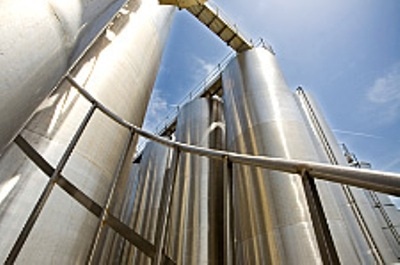Type 304L is a lower carbon variant of Grade 304 – the steel can be welded without the resulting issue of carbon precipitation (precipitation of chromium carbide as heat is applied during the welding process which depletes the chromium element of the steel thus reducing its anti-corrosive/oxidation effectiveness).

As a result, Type 304L stainless steel is a sought after material for use in severely corrosive conditions. Weld annealing is only necessary in applications where stress loads are excessive.
This steel Grade is found in a variety of commercial sectors, particularly in the chemical industry.
Benefits of using 304L Stainless Steel
Benefits of using grade 304L stainless steel include:
- Low carbon content eliminates carbon precipitation in the welding process
- Can be used in severe corrosive environments
- Weld annealing only required in high stress applications
- Very similar to Type 304
304 & 304L plate and pipes have similar properties and in certain cases are stocked with Dual Certification, where it is concluded that each item has properties and a composition which comply with both steel types. Grade 304H cannot be included in this equation due to the steel's higher carbon content which is intended for use in elevated temperature applications.
Chemical Composition of 304L Stainless Steel
The chemical composition of 304L Stainless Steel is provided in the table below.
| UNS NO |
Grade |
C |
Si |
Mn |
P |
S |
Cr |
Mo |
Ni |
N |
| S30403 |
304L |
0.030 |
0.75 |
2.00 |
0.045 |
0.030 |
18.00/20.00 |
- |
8.00/12.00 |
0.10 |
Mechanical Properties of 304L Stainless Steel
The mechanical properties of 304L Stainless Steel are provided in the table below.
| UNS No |
Grade |
Proof Stress
0.2% (MPa) |
Tensile Strength
(MPa) |
Elongation
A5(%) |
Hardness Max |
| HB |
HRB |
| S30403 |
304L |
170 |
485 |
40 |
201 |
92 |

This information has been sourced, reviewed and adapted from materials provided by Masteel UK Ltd.
For more information on this source, please visit Masteel UK Ltd